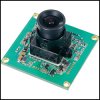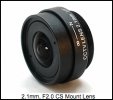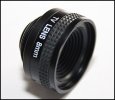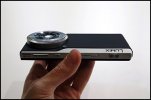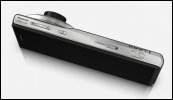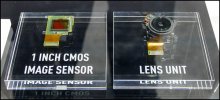The entire development of the action camera and dash cam markets only came about because of an already mature, preexisting and sizeable market for board cameras that used fixed aperture M12 x P0.5
board lenses.
M12 board lenses were/are primarily used in CCTV cameras, video conferencing, web cams, medical systems and machine vision. When the newer technology of relatively low priced and quite small SoC video DSPs were introduced, first seen in small "tapeless" camcorders (
remember the FLIP?), action camera and dash camera manufacturers were simply able to repurpose and repackage existing board lenses into a new class of products because a broad range of suitable, low cost, off-the-shelf components were already available. These developments along with the
concomitant introduction of ever smaller and increasingly lower cost non-volatile solid state memory chips gave rise to today's action cams and dash cams.
View attachment 28409 View attachment 28414
There do exist widely available lower profile fixed aperture C and CS mount lenses generally used in the CCTV market that might be incorporated into a new generation of larger sensor dash cams but again, most C lenses require an optical design and mounting flange that makes them rather large for a dash cam and would require a much larger camera housing. There are some board mounting options for C lenses but they are not generally considered "board lenses" the way M12 or M14 lenses are. Perhaps we will eventually see this come about but I think it will be quite some time before we see such a camera, if ever, and at least at first they would be quite expensive. (and rather bulky even if deployed as just a remote lens module).
View attachment 28407 View attachment 28408
low profile CS & C mount lenses
Two years ago Panasonic introduced the
DMC-CM1 smartphone/camera which featured a 1 inch CMOS sensor paired with a f/2.8 Leica lens. Such a device might foreshadow a path forward for an eventual large sensor compact dash camera but the Panasonic requires a very expensive proprietary lens assembly and sensor incorporated into a camera/phone that cost nearly 1000 dollars USD when first introduced . If such lens technology were to become more widely available and the price were to drop significantly then I believe we'd start to see large sensor dash cams follow along fairly rapidly.
View attachment 28410 View attachment 28412 View attachment 28411
View attachment 28413



